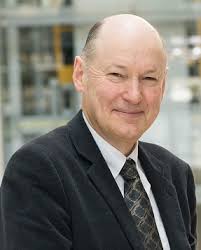New prebiotic and biomimetic approaches for treating oral disease
On Demand Webinar!
CPD: 1 CPD
PRESENTERS | Professor Eric Reynolds AO & Professor Ian Meyers OAM BDSc, FICD, FADI, FPFA, FRACDS


Laureate Professor Eric C. Reynolds AO FICD FTSE FRACDS MASM
Laureate Professor Eric Reynolds AO is Chief Executive Officer and Research Director of the Oral Health CRC at the Melbourne Dental School, the University of Melbourne. For 16 years until 2015 Eric was Head of the Melbourne Dental School. He has lectured and published extensively and has chaired and participated in a wide range of professional committees and panels. He has 386 publications, with 31,586 citations and an h-index of 95. Eric was appointed an Officer of the Order of Australia for his service to community dental health in 2005. He received the Clunies Ross National Science and Technology award in 2002 and the Victoria Prize for Science in 2005. In 2011 he received the Distinguished Scientist Award from the International Association for Dental Research, and in 2015 the Leach Medal for research excellence and the Global Health Impact Award from the University of Melbourne. In 2016 he received the Award of Merit from the Australian Dental Association and in 2017 the Prime Minister’s Prize for Science Innovation. In 2019 he was elected Vice-President of the International Association for Dental Research and became President in July 2021. In 2020 he received the European Organisation for Caries Research Prize for outstanding scientific contribution and the American Academy of Periodontology Clinical Research Award.
Professor Ian Meyers OAM BDSc, FICD, FADI, FPFA, FRACDS
Professor Ian Meyers is a general dental practitioner and honorary professor at The University of Queensland School of Dentistry. Over the last thirty five years he has been involved in dental education and research, practised clinical dentistry in private practice, university and hospital based dental clinics, and been a director and board member of numerous dental associations and colleges.
His previous positions include being appointed as the inaugural Colgate Chair of Dental General Practice Dentistry, Chief Dental Officer for Queensland Health, President of the Queensland Branch of the Australian Dental Association, and CEO of the Australian Dental Association Queensland Branch. He is a Fellow and current Board member of the Royal Australasian College of Dental Surgeons and the International College of Dentists, and is a Fellow of the Academy of Dentistry International and the Pierre Fauchard Academy. Professor Meyers is a long standing member of the ADA Dental Instruments, Materials and Equipment Committee and a member of the editorial board of The Australian Dental Journal and several other international journals. He is an external examiner at several dental schools and examiner for the Australian Dental Council.
Throughout his career as an academic and clinician Ian has developed extensive experience in comprehensive patient care, diagnosis and management of worn and broken down dentition, geriatric and aged care dentistry, adhesive restorative dentistry and dental materials, and the management of patient’s in general dental practice through minimum intervention dentistry. He has lectured extensively on these topics both nationally and internationally.
Microbiome Modulation for Periodontal Health
Periodontal diseases are characterised by chronic inflammation and can be classified into different clinical stages which are associated with transitions in plaque microbial diversity and signatures in composition. The transition from health to gingivitis is associated with an accumulation of plaque at the gingival margin resulting in inflammation, an increase in microbial diversity and soft tissue swelling to form a pocket. The environment of the pocket, which can become anaerobic, may allow the emergence of Gram-negative anaerobes and a further increase in inflammation and microbial diversity. The emergence of the Gram-negative anaerobes in a susceptible host and suitable pocket can lead to a state of dysbiosis, where the consortium of microbes in the periodontal pocket becomes pathogenic with a transition from gingivitis to periodontitis involving the destruction of the tooth’s supporting tissues. A saliva biomimetic CPP-ACP has been shown to increase the level of plaque commensal/beneficial bacteria and significantly reduce periodontal disease in a dose-dependent manner. The plaque microbiome was significantly altered by the saliva biomimetic with an increase in commensal/beneficial species and a concomitant reduction in Gram-negative species. The change in microbial composition could be represented by a Plaque Eubiotic Index (PEI) which was inversely associated with gingival inflammation at a site, with high PEI being present at sites with no inflammation. This reduction in gingival inflammation at a site level was closely associated with an increase in commensal species, particularly those known to be antagonistic to the periodontal pathogens and to suppress inflammation and induce mucosal tolerance. In conclusion, modulating plaque microbial composition by increasing the fitness of commensal/beneficial bacteria can improve mucosal homeostasis and periodontal health.
Learning Outcomes:
• Recognize the difference in the plaque microbiome associated with periodontal health and disease.
• Discuss the emergence of a pathogenic consortium of Gram-negative anaerobes as the trigger for periodontitis.
• Describe how certain periodontal pathogens have been linked with other diseases such as Alzheimer’s disease.
• Describe how a saliva biomimetic can improve the fitness of plaque commensal/beneficial species which are antagonistic to the periodontal pathogens.
• Discuss how increasing the relative abundance of the plaque commensal/beneficial species can improve mucosal homeostasis and periodontal health.